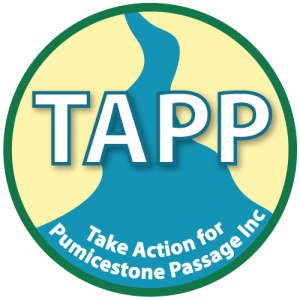Agriculture, Forestry and Science Knowledge
Public use and recreation management of public lands
- Government needs to manage the recreational activities on public land in forestry.
- Regulatory changes around use of state land
- Who and how it gets administered in a compliance aspect
- Public education and awareness, especially of children, around the use of these areas
- Designated 4wd / bike areas
- Opportunity to use technology for monitoring and management of recreational activities
- Opportunity for private parks for 4wd, motorbike and other recreational activities
- Opportunity to utilise some space for airstrip in forestry to move low flying aircraft out of peri-urban areas
Native forestry systems
- How can we farm native forests?
- What are the barriers to a native forestry industry?
- Historical removal of blackbutt for pine plantation ecological failure.
Education / promotion of local agriculture
There is a range of activities already happening in this space. We had strong support for current activities and ongoing support of this nature.
- Paddock to Plate advocate for sunshine coast on TV (Jade King on the first episode)
- FAN network involvement essential
- Connection with the general public through visual media
- Connecting of food with the production and environment.
- Improve understanding / education around threats to Pumicestone from horticulture
- Engaging marketing campaigns i.e. tim tams sunshine coast strawbs
- School programs to understand where food comes from and promote local foods
Socioeconomics
- What do small and large horticultural enterprises bring to the community.
- How can we gather data to determine tangible and intangible values of horticulture to the ecosystem.
- Ecosystem including (but not limited to): soil, air, plants, microbe diversity, fauna diversity, carbon sequestration
- How can we address the complete market failure in agriculture which is defined by small margins and maximising production.
- How can we price environmental considerations into food prices
- How can we encourage / reward horticultural best practice?
- How do we manage cheap imports that undercut margins
- Branding of products (i.e. Hort 360 / Harps) for undergoing a environmental program
- Payments for ecosystem services
- How can we acknowledge best practice within the community
- Broader federal issues such as taxes, decreased regulation
Land Use
- How do we manage the security of horticultural land with the competition for other purposes including housing.
Water Quality – Pesticides
- Targeted monitoring program of what is being used in the catchment
- Better story around what has been tested historically and what it means, including toxicology data
Broad lack of detail about groundwater in the region
Horticultural Industry Extension
- Better collaboration between growers on technology (between industries and within industries)
- Fragmented market for extension – DAF, agronomists, not for profits, for profits
- How can we integrate the message
- Communication broker to ensure knowledge can be bought to farms
- Connectivity between all groups
- Peer group education
- More 1:1 interaction to build relationships and change behaviours
Climate Change
- Support for industry to build resilience into their systems to ensure production in a more uncertain environment
- Better carbon sequestration schemes or credit / debit schemes.
- Improving knowledge of regenerative farming systems
Communication Challenges
- Challenge around communication of expert knowledge and its understanding by the layperson.
- Understanding what is most harmful to the health of the passage from the overwhelming range of threats
- Big data gap here, allowing misinformation to flourish
Living in the Pumicestone Catchments in 2050 – The Vision
A diverse and resilient natural environment, farming systems and housing which supports a high quality of life for humans with a thriving local circular economy.
Section 1
Understanding how the changes of flow will be impacted under increased intensity events
- Breakthrough at Bribie
- Sedimentation in the passage
Mechansim to improve diversity of flora and fauna
Mechanism to improve stabilisation of seagrass beds
Zoning for recreational uses
Managing wash from rec use and wildlife requirements
Research gap on impact of watercraft on bank stabilisation
Section 2
Zoning for recreational uses
Managing wash from rec use and wildlife requirements
Research gap on impact of watercraft on bank stabilisation
Increase size of seagrass beds, how?
Reduce water speed on land and channel and rivers to reduce sedimentation
Section 3
Innovative future proof urban spaces
Less impervious surfaces in building design
Building design codes to be more environmentally friendly
National Parks permits and capped
Turtle friendly lighting solutions – switch of lights by 7:30 / reduce light pollution
Increase funding to parks rangers across state so problems don’t move inland
Improved regulation of rules to camping
Section 4
Innovative future proof urban spaces
Less impervious surfaces in building design
Building design codes to be more environmentally friendly
National Parks permits and capped
Turtle friendly lighting solutions – switch of lights by 7:30 / reduce light pollution
Increase funding to parks rangers across state so problems don’t move inland
Improved regulation of rules to camping
Section 5
Innovative future proof urban spaces
Less impervious surfaces in building design
Building design codes to be more environmentally friendly
Free access to tips
Improve recycling systems and infrastructure
Clear bins – make it visible to see if correct stuff is in correct bin by the truck driver.
Council compost collection – make it free
Co-operative arrangement to compost farm waste and return to farm (verterra is example)
Improve compliance with household rubbish
Circular system for waste
Kerbside rubbish collection
Section 6
Innovative future proof urban spaces
Less impervious surfaces in building design
Building design codes to be more environmentally friendly
Adaptive management for retreat from the area
Section 7
Innovative future proof urban spaces
Less impervious surfaces in building design
Building design codes to be more environmentally friendly
Continue to strengthen relationships between councils – catchments don’t have the same boundaries.
